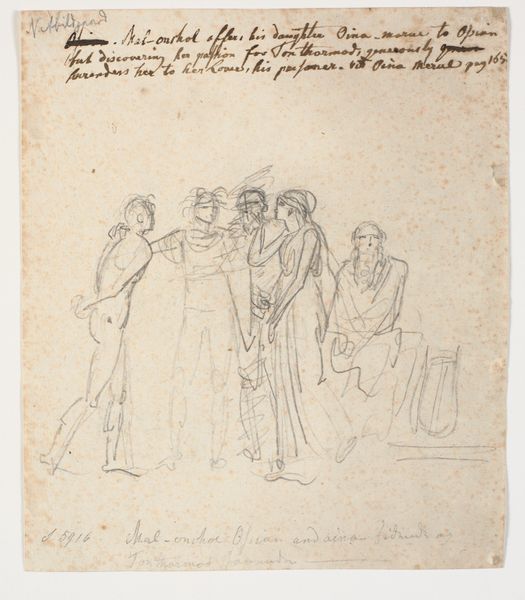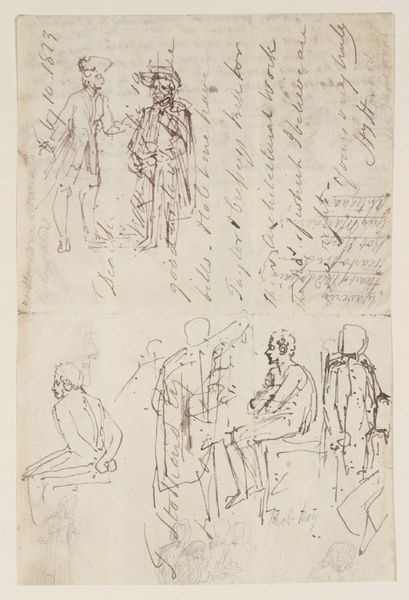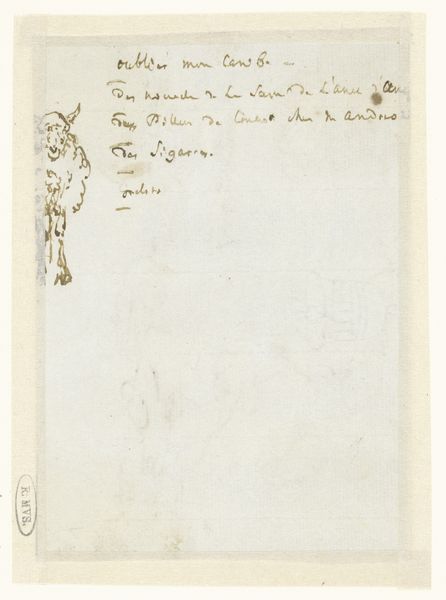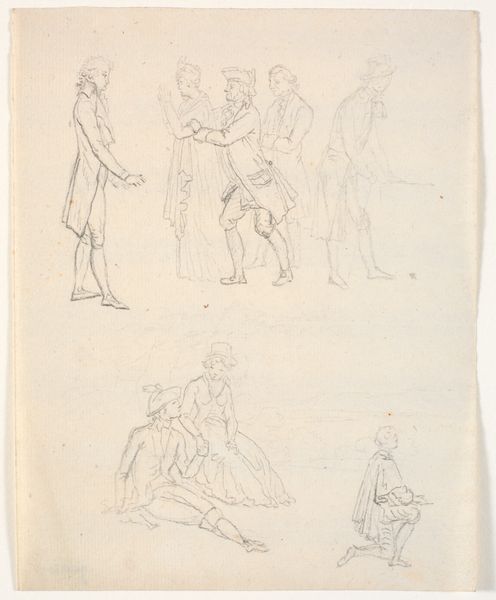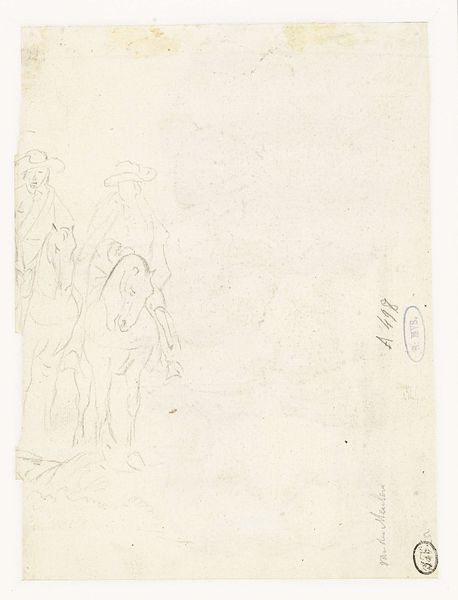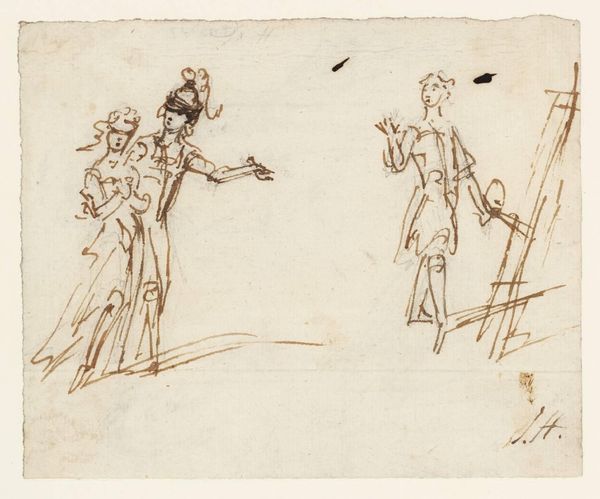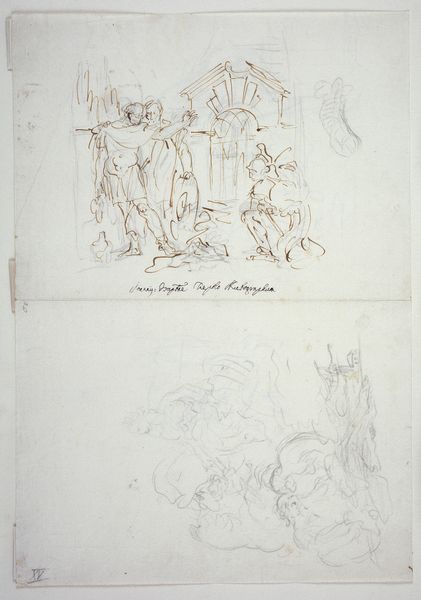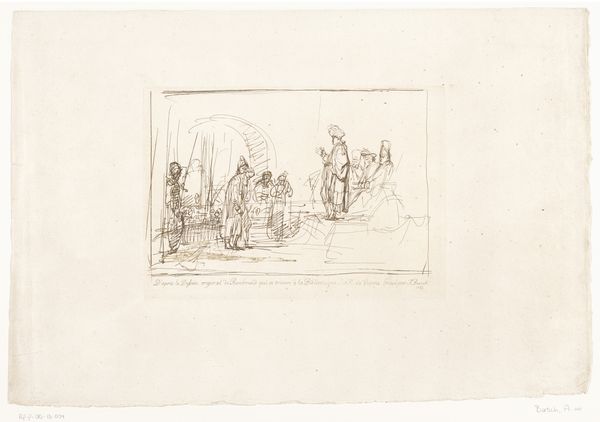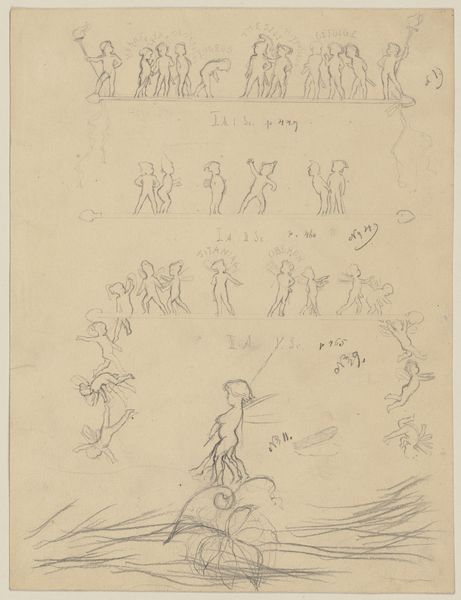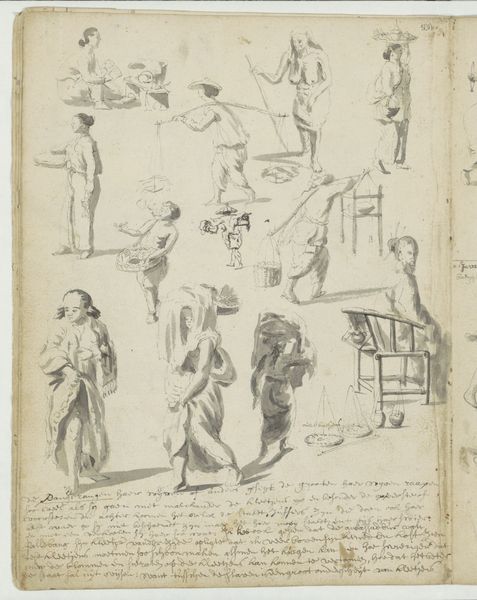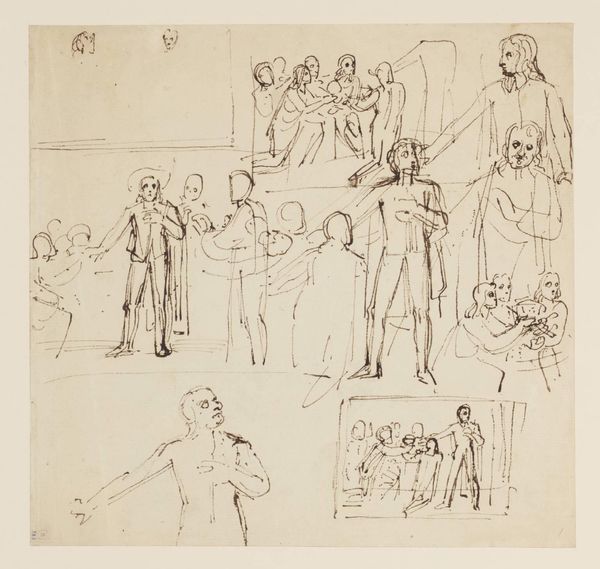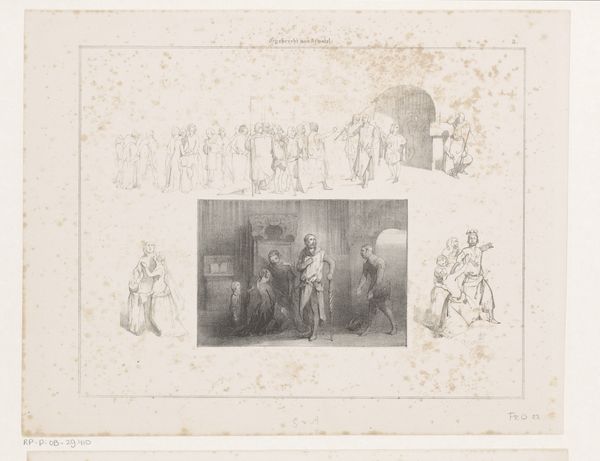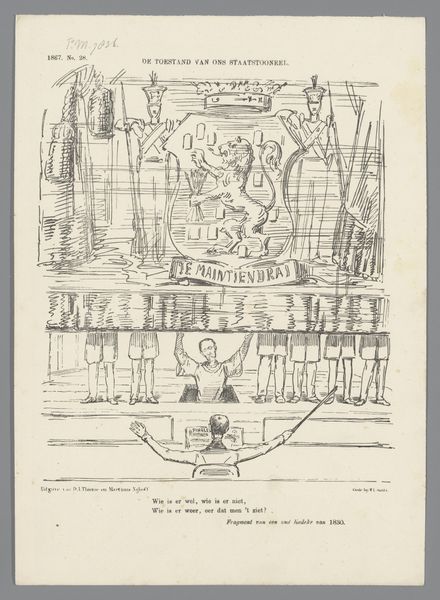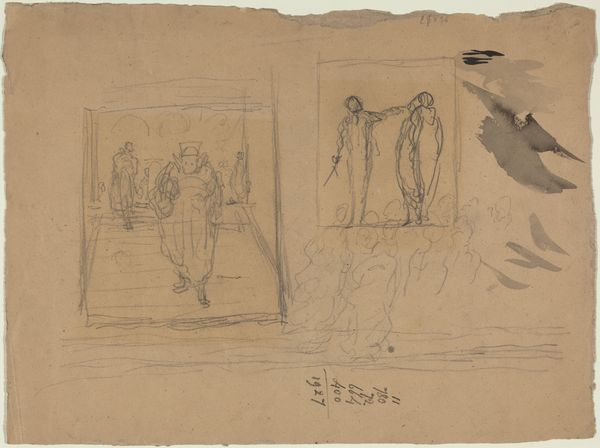
drawing, paper, pen
#
portrait
#
drawing
#
narrative-art
#
pen sketch
#
figuration
#
paper
#
pen
#
academic-art
Dimensions: height 315 mm, width 200 mm
Copyright: Rijks Museum: Open Domain
Editor: This pen and ink drawing on paper, titled "Standbeelden," created between 1787 and 1808 by Jan Brandes, presents what looks like various figural sketches, possibly studies for larger works. The sheet of paper also seems to contain calculations and writing. The whole effect is somewhat disjointed but fascinating. What strikes you most about this work? Curator: Well, looking at "Standbeelden" through a historical lens, I see a glimpse into the artist's process, the intersection of documentation, art, and the colonial gaze. Brandes worked for the Dutch East India Company; the script is probably related to that. These seemingly disparate elements--the accounting, the figural sketches— speak to the complex role of art within structures of power. How does seeing the work in that context change how you interpret the 'statues'? Editor: It's true; considering the colonial context changes things completely. It makes me think about how Brandes might have viewed and documented the people and places he encountered. The sketches no longer feel random but deliberate and possibly political, highlighting power structures of the time. Did Brandes display these drawings publicly? Curator: It’s unlikely these particular studies would have been displayed as finished artworks, more likely these images circulated among a specific audience, reinforcing existing societal norms and power structures. The politics of imagery is always fascinating, right? This sheet allows us to delve into those complex relationships between artist, subject, and the dominant culture. Do you find yourself reconsidering your initial reaction to the work now? Editor: Definitely! I now see it less as a collection of sketches and more as a visual record embedded with historical and societal context, a window into Brandes' world. It’s so interesting how a seemingly simple drawing can reveal such intricate layers of meaning once you understand its historical and cultural background. Curator: Exactly! And that, for me, is what makes art history so compelling – constantly reassessing what we think we know and uncovering the multiple truths hidden within a work.
Comments
No comments
Be the first to comment and join the conversation on the ultimate creative platform.
